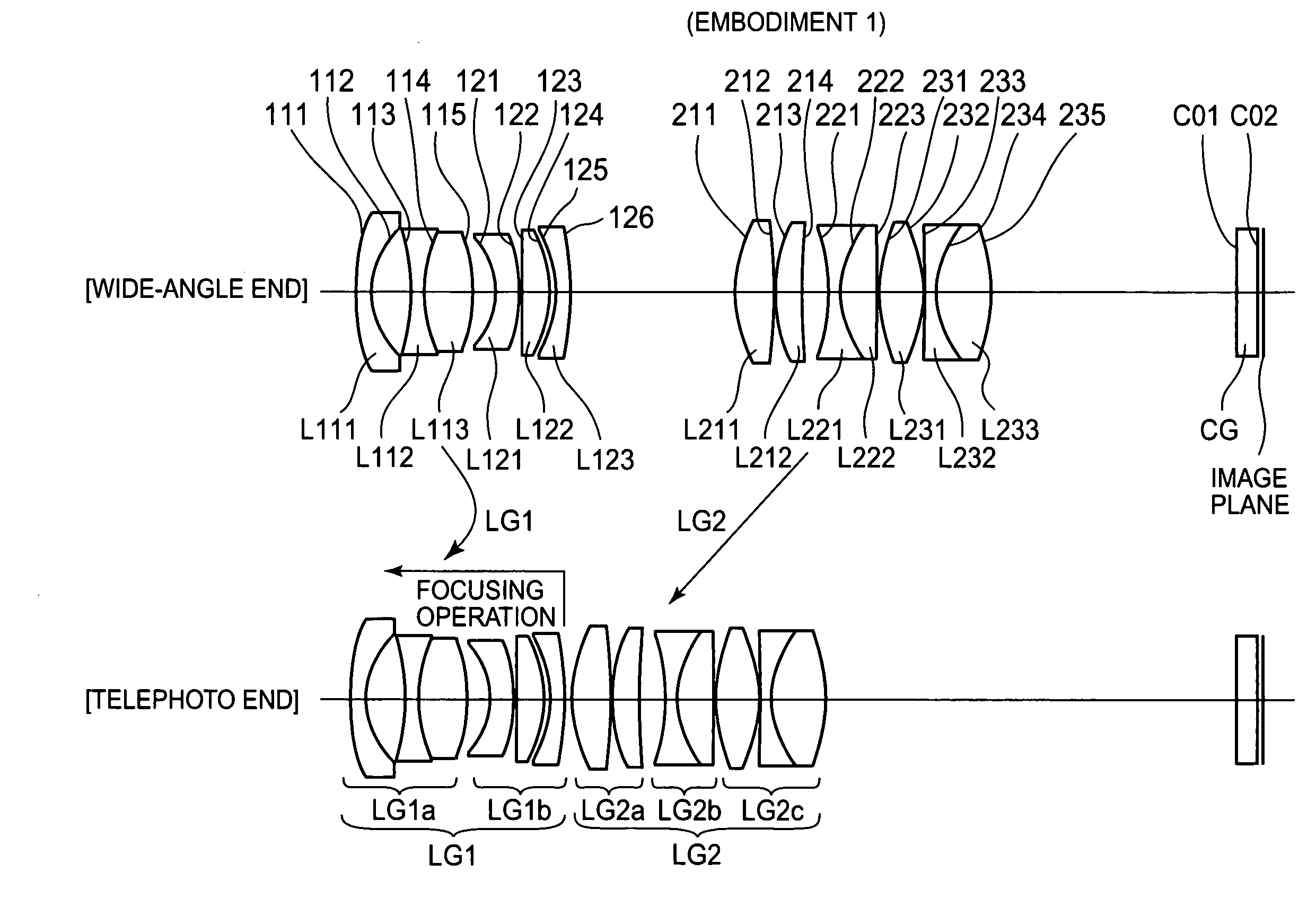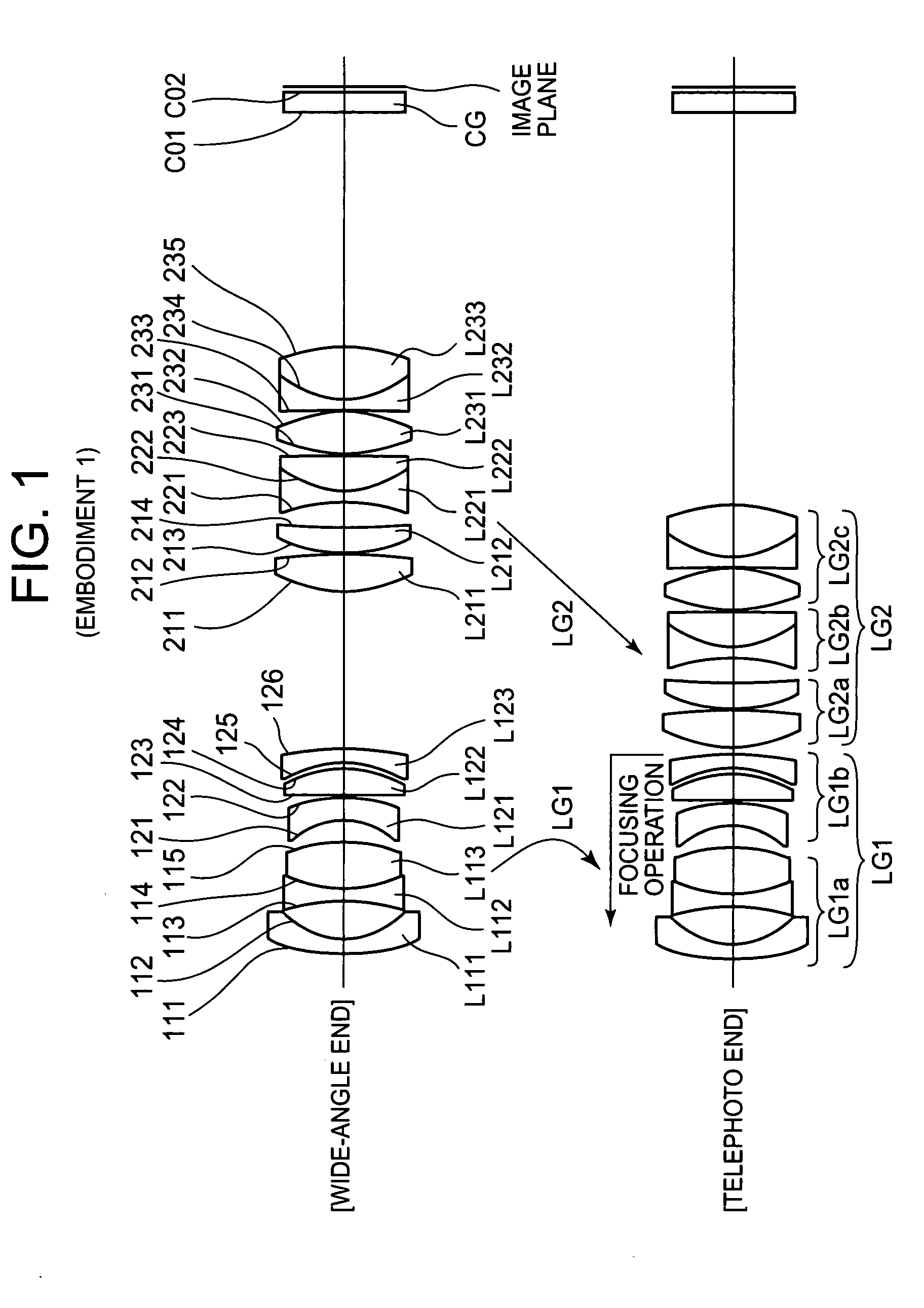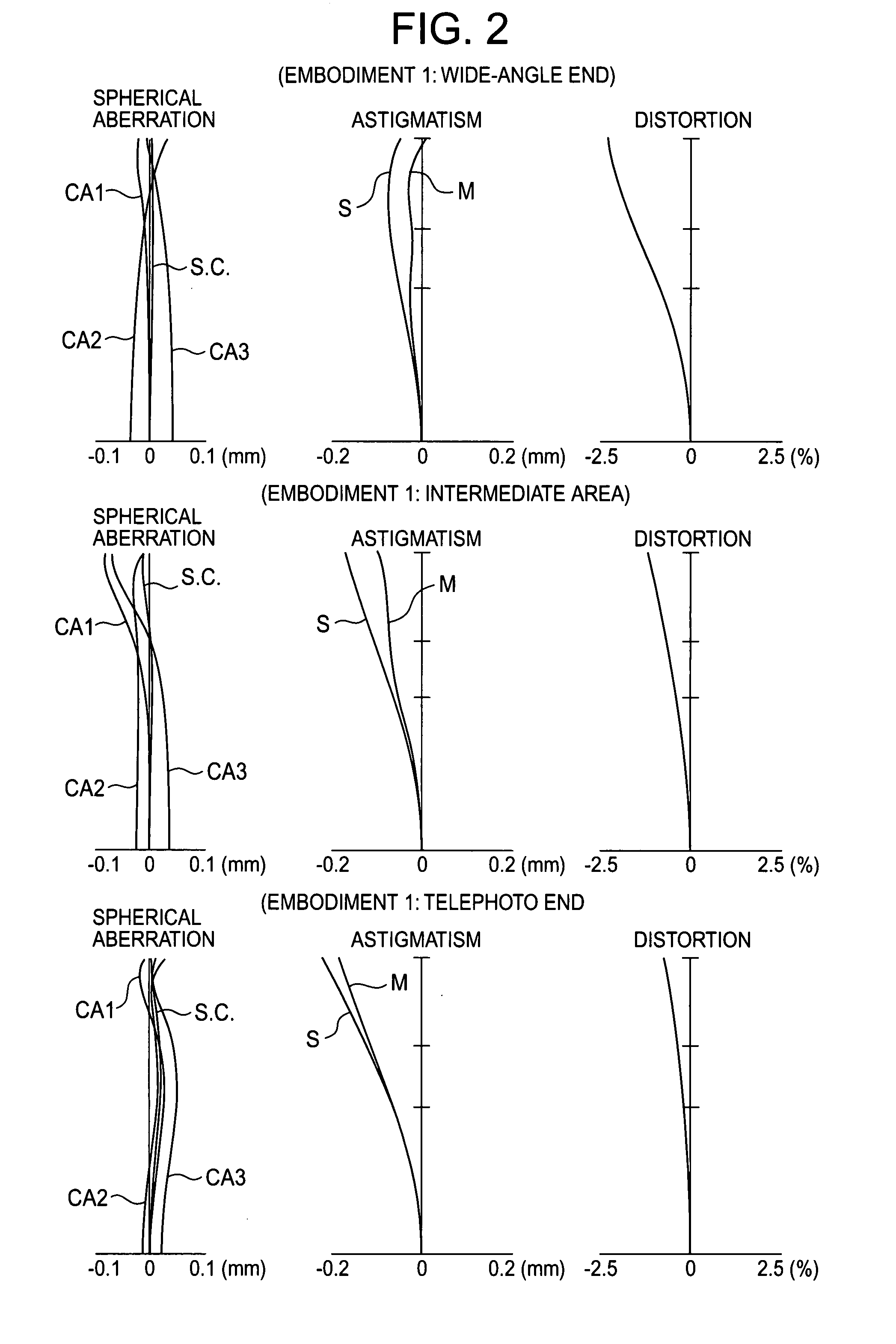Zoom lens and projector unit
a zoom lens and projector technology, applied in the field of compact zoom lenses, can solve the problems of imposing limitations on projection lenses, the largest limitation in developing small projector units, and the limitation of the arrangement of light source systems
- Summary
- Abstract
- Description
- Claims
- Application Information
AI Technical Summary
Benefits of technology
Problems solved by technology
Method used
Image
Examples
embodiment 1
[0108]A numerical example for a first embodiment of a zoom lens of the invention is shown in Table 1. In addition, FIG. 1 is a drawing showing a lens configuration of the first embodiment and FIG. 2 shows drawings illustrating aberrations thereof. In the table and drawings, f denotes a focal length of the whole zoom lens system, Fno an f number, and 2ω a total angle of view of the zoom lens. In addition r denotes radius of curvature, d lens thickness or space between lens elements, nd a refractive index relative to the line d, and νd Abbe number of the line d (where, numerical values in the table which change by virtue of focusing operation are numerical values which result when an object distance from a surface 111 is 1700 mm in a focused state). CA1, CA2, CA3 in the spherical aberration drawings in the drawings showing aberrations are aberration curves in wavelengths of CA1=550.0 nm, CA2=435.8 nm and CA3=640.0 nm, respectively. In addition, S. C. is a sine condition. In aspherical...
embodiment 2
[0109]A numerical example for a second embodiment of a zoom lens of the invention is shown in Table 2. In addition, FIG. 3 is a drawing showing a lens configuration of the second embodiment and FIG. 4 shows drawings illustrating aberrations thereof.
TABLE 2Wide angle endIntermediate areaTelephoto endf15.9123.8630.74Fno2.292.723.232ω65.8246.1036.34Hereinafter, airspaces which change by variable powerD925.958.771.08D2134.3946.5957.22Serial numbersSurface numbersrdndνd111151.6312.321.8061040.73211214.9175.27——3113−84.6005.451.6968055.48411428.0039.381.6727032.175115−68.1232.20——6121−15.9084.991.7725049.657122−34.9070.20——8123674.5872.691.6932033.709124−59.759[D9]——1021127.3925.251.4970081.6111212−133.5270.20——1221334.4303.581.4874970.4513214222.5525.68——14221−36.2441.501.8042046.491522219.2635.271.5831359.4616223−169.9160.20——1723134.3076.411.5891361.2518232−28.0740.20——19233−225.6121.201.8042046.492023418.2967.701.4874970.4521235−39.714[D21]——22C01∞3.001.4874564.8423C02∞———Aspherical c...
embodiment 3
[0110]A numerical example for a third embodiment of a zoom lens of the invention is shown in Table 3. In addition, FIG. 5 is a drawing showing a lens configuration of the third embodiment and FIG. 6 shows drawings illustrating aberrations thereof.
TABLE 3Wide angle endIntermediate areaTelephoto endf15.9123.8830.76Fno2.292.733.402ω65.7846.0036.30Hereinafter, airspaces which change by variable powerD723.998.141.05D1934.0046.8658.04Serial numbersSurface numbersrdndνd111124.9352.071.8013945.45211212.1216.98——3113−32.5886.001.8061033.27411416.41811.18 1.7282528.315115−24.3711.46——6121−14.2863.501.8013945.457122−23.535[D7]——821129.7686.091.4874970.459212−165.0750.20——1021333.6994.081.4970081.6111214−655.3494.22——12221−43.4862.731.7725049.651322219.4165.361.5067070.5014223−160.6860.20——1523134.3008.051.4874970.4516232−27.3330.86——17233297.3921.201.8042046.491823419.8307.571.4874970.4519235−50.107[D19]——20C01∞3.001.4874564.8421C02∞———Aspherical coefficient111th surfaceK =−3.9661E+00A =5.6879...
PUM
 Login to View More
Login to View More Abstract
Description
Claims
Application Information
 Login to View More
Login to View More - R&D
- Intellectual Property
- Life Sciences
- Materials
- Tech Scout
- Unparalleled Data Quality
- Higher Quality Content
- 60% Fewer Hallucinations
Browse by: Latest US Patents, China's latest patents, Technical Efficacy Thesaurus, Application Domain, Technology Topic, Popular Technical Reports.
© 2025 PatSnap. All rights reserved.Legal|Privacy policy|Modern Slavery Act Transparency Statement|Sitemap|About US| Contact US: help@patsnap.com



